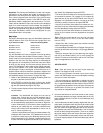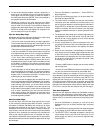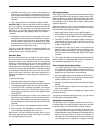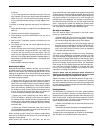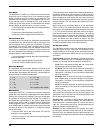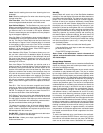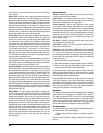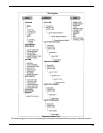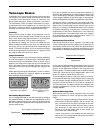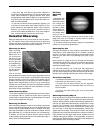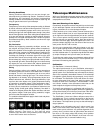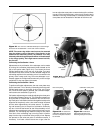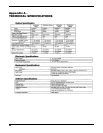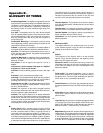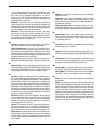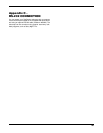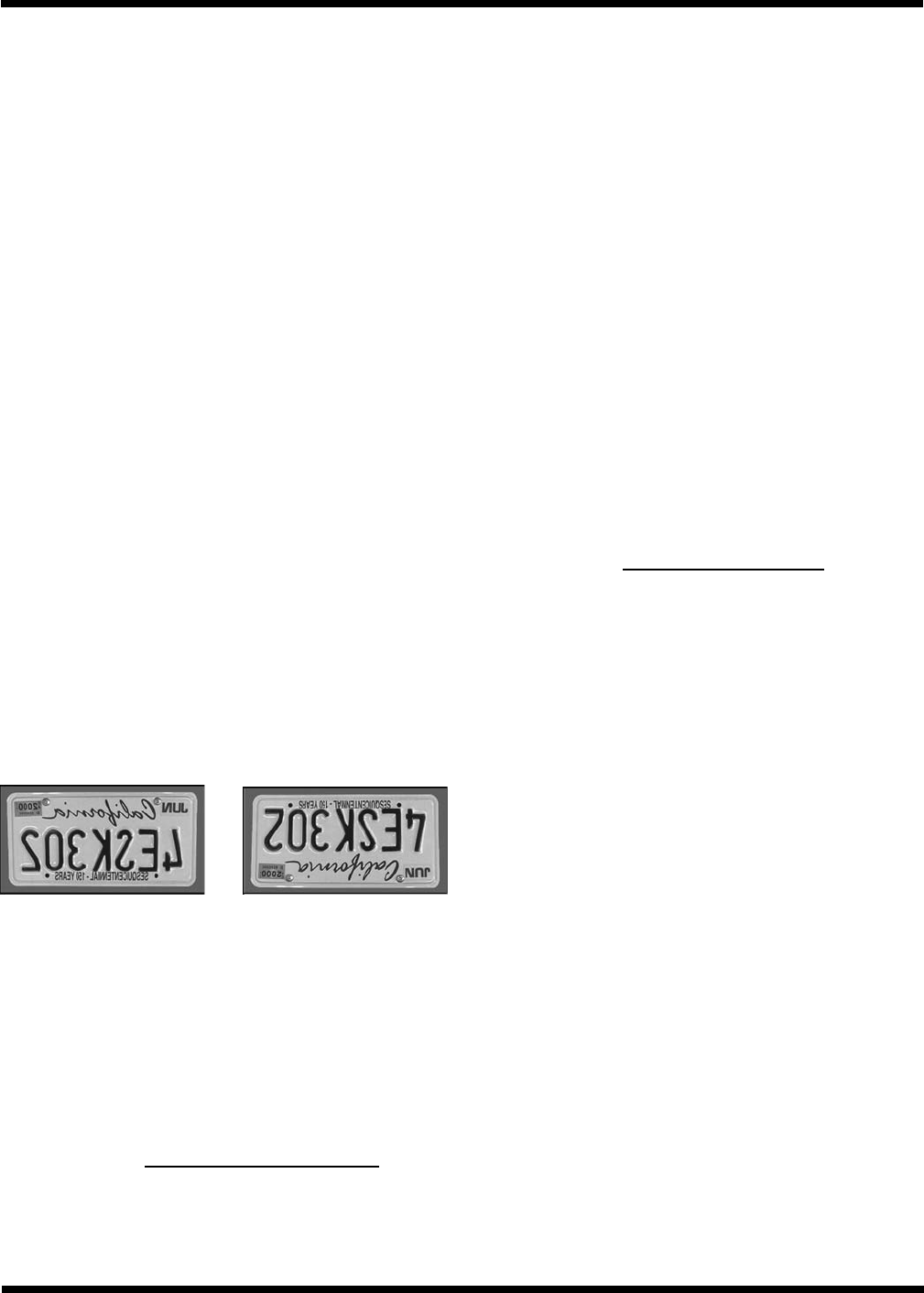
18
Telescope Basics
A telescope is an instrument that collects and focuses light.
The nature of the optical design determines how the light
is focused. Some telescopes, known as refractors, use
lenses. Other telescopes, known as reflectors, use mirrors.
The StarSeeker 70mm and 80mm telescopes are refrac-
tor telescopes that use an objective lens to collect light. The
StarSeeker 114mm and 130mm are reflecting telescopes with
a primary and secondary mirror to gather and focus light.
Focusing
Once you have found an object in the telescope, turn the
focusing knob until the image is sharp. To achieve a truly sharp
focus, never look through glass windows or across objects
that produce heat waves, such as asphalt parking lots.
For astronomical viewing, out of focus star images are very
diffuse, making them difficult to see. If you turn the focus knob
too quickly, you can go right through focus without seeing the
image. To avoid this problem, your first astronomical target
should be a bright object (like the Moon or a planet) so that
the image is visible even when out of focus.
Image Orientation
The image orientation of any telescope changes depending
on how the eyepiece is inserted into the telescope. When
observing through the StarSeeker 70mm or 80mm using a
diagonal, the image will be right side up, but reversed from
left to right. When observing straight through, with the eye-
piece inserted directly into the telescope, the image will be
inverted.
When observing through the StarSeeker 114mm or 130mm,
a reflecting telescope, the image will appear up-side-down
when looking through the eyepiece.
Calculating Magnification
You can change the power of your telescope just by changing
the eyepiece (ocular). To determine the magnification of your
telescope, simply divide the focal length of the telescope by
the focal length of the eyepiece used. In equation format, the
formula looks like this:
Focal Length of Telescope (mm)
Magnification =
Focal Length of Eyepiece (mm)
Let’s say, for example, you are using the 25mm eyepiece. To
determine the magnification you simply divide the focal length
of your telescope (for example, the StarSeeker 130mm has
a focal length of 650mm) by the focal length of the eyepiece,
25mm. Dividing 650 by 25 yields a magnification of 26 power.
Although the power is variable, each instrument under aver-
age skies has a limit to the highest useful magnification. The
general rule is that 60 power can be used for every inch of
aperture. For example, the StarSeeker 80mm is 3.2" (80mm)
in diameter. Multiplying 3.2 by 60 gives a maximum useful
magnification of 192 power. Although this is the maximum
useful magnification, most observing is done in the range of
20 to 35 power for every inch of aperture which is 64 to 112
times for the StarSeeker 80mm telescope.
Determining Field of View
Determining the field of view is important if you want to get
an idea of the angular size of the object you are observing. To
calculate the actual field of view, divide the apparent field of
the eyepiece (supplied by the eyepiece manufacturer) by the
magnification. In equation format, the formula looks like this:
Apparent Field of Eyepiece
True Field =
Magnification
As you can see, before determining the field of view, you must
calculate the magnification. Using the example in the previous
section, we can determine the field of view using the same
25mm eyepiece. The 25mm eyepiece has an apparent field of
view of 56°. Divide the 56° by the magnification, which is 26
power. This yields an actual field of view of 2.2°.
To convert degrees to feet at 1,000 yards, which is more use-
ful for terrestrial observing, simply multiply by 52.5. Continuing
with our example, multiply the angular field 2.2° by 52.5. This
produces a linear field width of 115.5 feet at a distance of
one thousand yards. The apparent field of each eyepiece that
Celestron manufactures is found in the Celestron Accessory
Catalog (#93685).
General Observing Hints
When working with any optical instrument, there are a few
things to remember to ensure you get the best possible
image:
• Never look through window glass. Glass found in house-
hold windows is optically imperfect, and as a result, may
vary in thickness from one part of a window to the next.
This inconsistency can and will affect the ability to focus
your telescope. In most cases you will not be able to
achieve a truly sharp image, while in some cases, you
may actually see a double image.
• Never look across or over objects that are producing
heat waves. This includes asphalt parking lots on hot sum-
mer days or building rooftops.
Reversed from left to right, as
viewed with a star diagonal
Inverted image as viewed
with the eyepiece directly in
telescope



